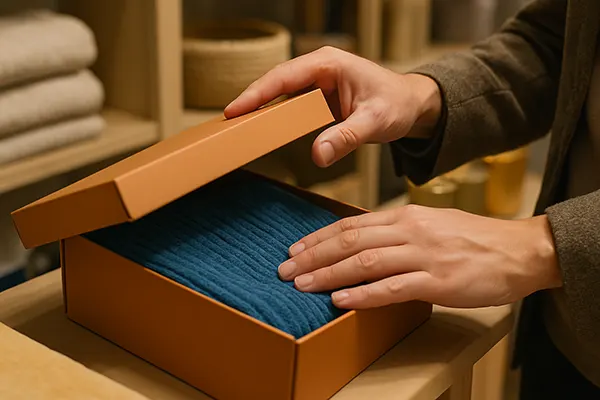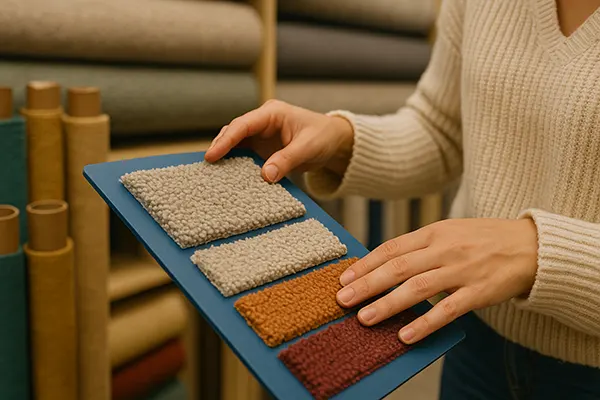
Tactile Marketing: How Touch Influences Buyer Decisions
The sense of touch plays a subtle but powerful role in consumer behaviour. In marketing, tactile experiences can trigger emotional responses, build trust, and impact purchasing decisions in ways that visual or auditory cues alone cannot achieve. Understanding how texture, weight, and material influence perception allows brands to design more effective customer interactions.
The Psychology Behind Tactile Perception
Human beings have an instinctive connection to the sense of touch, dating back to early development. Touch helps us assess safety, comfort, and trust—factors that are equally important in consumer environments. When customers physically interact with a product or its packaging, their brain engages emotional and rational centres that shape perception and decision-making.
Research in neuropsychology shows that tactile input can activate areas related to pleasure and memory. For instance, a soft fabric might remind someone of a cosy childhood blanket, while a rough texture could be associated with something lower in quality or unrefined. These associations are not always conscious but have a measurable effect on willingness to buy.
In-store environments often use tactile cues intentionally. Wooden shelves, heavy brochures, or textured packaging subtly communicate quality or authenticity. Touch increases engagement and trust, particularly in categories like fashion, luxury goods, or wellness, where sensory experience is integral to perceived value.
Case Studies of Effective Use
Apple’s product packaging is a classic case of tactile marketing success. The slow unboxing process, with its crisp paper texture and smooth box finish, creates an emotional build-up that enhances product satisfaction. Consumers often mention the “feel” of Apple packaging as part of their purchase experience.
Another strong example comes from premium chocolate brands, where matte, embossed or foil wrapping makes the product appear more luxurious. Lindt, for instance, uses rich-textured gold foil that subconsciously reinforces quality expectations before tasting begins.
Even in printed marketing, tactility matters. Brochures printed on heavyweight matte paper or with soft-touch lamination feel more substantial and are less likely to be thrown away. This form of sensory marketing helps reinforce the perceived seriousness or premium nature of the offering.
The Role of Touch in E-Commerce
While digital shopping lacks direct physical contact, tactile marketing principles are increasingly used in the digital realm. Brands use vivid product descriptions, high-resolution imagery, and even sound design to evoke imagined texture and weight. The goal is to simulate touch through multisensory storytelling.
“Haptic visuality” is a term used in digital design to describe imagery that feels touchable. Online stores that include videos showing fabric movement, product unboxing, or 360° views help replace the absence of real touch. These elements offer enough sensory cues to reduce friction in decision-making.
In addition, digital packaging—such as downloadable guides or NFTs with tangible redemption value—is designed to offer digital tactile proxies. For example, luxury beauty brands offer virtual product trials using augmented reality, often alongside tactile sample delivery by post to bridge the gap between screens and real life.
Consumer Trust and Return Rates
One of the strongest correlations in e-commerce is between lack of tactile input and high return rates. When customers cannot feel texture, weight, or material in advance, they rely on assumptions—which sometimes leads to unmet expectations. Incorporating tactile simulations can lower return volume significantly.
Amazon’s recent addition of “Feel-This” tags on certain high-touch items like clothing and linens allows customers to read detailed sensory reviews, e.g., “buttery-soft feel” or “cool, crisp texture.” These user-generated cues enhance buyer confidence and improve satisfaction.
Retailers using free samples or trial kits have also reported reduced return rates and increased conversion. Even a small tactile preview, like a fabric swatch, can solidify the purchase decision and reduce customer anxiety associated with online buying.

Materials, Packaging, and Brand Perception
The materials used in packaging can change how consumers perceive a brand’s values. Sustainable materials like bamboo or recycled cardboard suggest eco-consciousness, while velvet liners or metal tins imply luxury. A mismatch between packaging texture and product positioning can confuse customers and diminish brand trust.
Luxury brands are particularly sensitive to these cues. In the perfume industry, heavy glass bottles and soft-touch outer boxes are designed to mirror exclusivity and timelessness. These tactile choices are not just functional—they send clear psychological signals.
On the other hand, minimalist packaging, often used in Scandinavian brands, delivers a different tactile message: clarity, purity, and function over embellishment. The simplicity becomes a form of branding in itself, often making the material feel more authentic and intentional.
Trends in Sustainable Tactility
As sustainability grows in importance, tactile marketing is adapting. Recycled textures—such as paperboard with visible fibres or plant-based plastics—offer a natural, raw sensation that aligns with green values. Brands like Lush and Aesop intentionally use unpolished materials to reinforce authenticity and transparency.
Textile labels are also shifting toward natural touchpoints: organic cotton tags, undyed linen bags, or biodegradable pulp trays. These not only appeal visually but also feel different in the hand, reinforcing a sensory experience that supports ethical positioning.
In luxury food and drink, sustainability does not mean sacrificing quality feel. Bamboo caps, hand-stitched closures, or reusable cloth bags signal premium status while remaining environmentally sound. This new generation of tactile strategy combines aesthetics with ethics.
Popular
-
 The Structure of a Persuasive Commercial T...
The Structure of a Persuasive Commercial T...Commercial copywriting in 2025 is no longer built around loud promises or …
-
 Why Brands Are Finding It Harder to Mainta...
Why Brands Are Finding It Harder to Mainta...Audience loyalty has long been viewed as a stable foundation for sustainable …
-
 The Future of Corporate Philanthropy: How ...
The Future of Corporate Philanthropy: How ...Corporate philanthropy in 2025 has moved far beyond traditional donations, evolving into …
-
 Micro-Budget Marketing Campaigns: How Smal...
Micro-Budget Marketing Campaigns: How Smal...In a market dominated by industry giants with massive advertising budgets, small …
